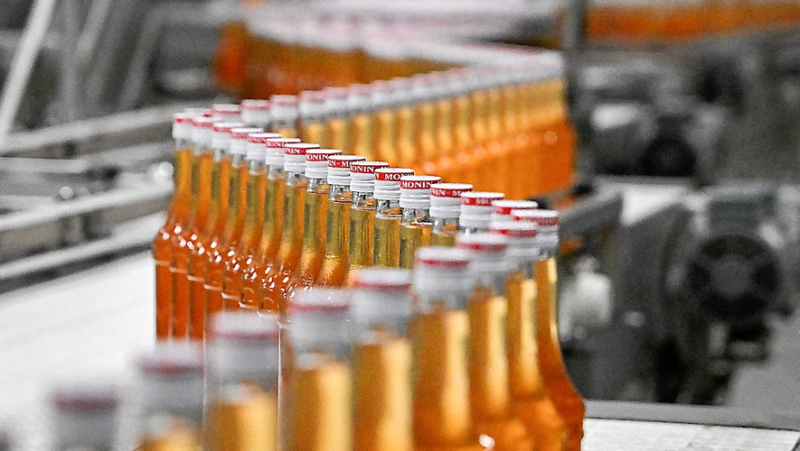Water, a resource to be preserved: the Monin syrup recycling model

Le recyclage de l Le siropier Monin vise 60 % d’économies d’eau sur son site berruyer. eau dans l usine MONIN – Pierrick DELOBELLE
For five years, the syrup maker has been working to demonstrate the feasibility of a water recycling solution on its site in the Cher, associated with the recovery of nutrients. Unprecedented in its scale and in the techniques adopted, this route has entered its operational phase.
It is the group's largest site. The one from which 55 million bottles of syrup leave each year for Europe, the Middle East, North Africa and Brazil. Anchoring Monin syrups, the Berry factory is becoming a showcase for its capacity to innovate, scrutinized by the largest agri-food groups.
10% water savings by 2030
Its project for the reuse of treated wastewater in a closed cycle entered its operational phase in the spring, and a revolution is indeed taking place. Imagined, dreamed, from the perspective of the creation of the new site (effective in 2016-2017) and initiated two years later, it takes shape in a moment of great awareness of the effects of climate change on the cycle of life. water, which was distinguished by the presentation, in March 2023, of the "Water plan" which has set a target of 10% water savings by 2030 by relying on sobriety and technological innovations.
The Zero Discharge Project
Since Bourges, the ambition of the syrup maker, who consumes nearly 60,000 cubic meters of water per year (80% of which is used for cleaning and rinsing the installations), was displayed. If it was first deployed through a savings policy based on optimization of uses and a redesigned organization of production, it took on another dimension with the Zero Rejection project, which aims the absence of discharges into the wastewater network or the natural environment. The vision retained: treat water to reuse it in the factory to replace drinking water and enhance organic and saline flows.
Support from the European Union
After a study of regulations and constraints carried out with the International Water Office, a technology, developed by Insa Toulouse, was chosen: membrane filtration, which allows you to separate water, sugar and salt. Used to desalinate seawater, it has until now never been used in Europe as the only solution for treating effluents in the food industry.
This is a first. "There is no biological treatment, it is less costly in terms of investment and operation , easier to deploy, more interesting in terms of yield, reuse of water and possibility of valorizing concentrates", says Ludovic Lanouguère, project manager at the Berruyère factory. To design and deploy this technology, a new player joins the story: Chemdoc water technologies, specialist in membrane filtration. The consortium obtains support from the European LIFE program, allowing public funding. The name of the project then becomes clear: LIFE-Zeus, for Zero Liquid discharge water rEUSe (zero liquid discharge-reuse of water).
a recycling rate exceeding 80%
Five years after the first reflections and the demonstration of the capacity to produce water conforming to the quality of water in contact with food, spring 2024 saw the entry into the operational phase. Two buildings have thus emerged from the ground on the Bourges site: the demonstrator on an industrial scale to which is attached a cutting-edge laboratory, and an installation allowing the recovery of mineral salts contained in the effluents to reuse them in production operations. regeneration. The time has now come for the production of the first liters of water. "There will be several months of monitoring of the control of the installation before reusing water by the beginning of next year", specifies Ludovic Lanouguère, who hopes "more than 60 % water savings on site with a recycling rate of over 80% of effluent . The concentrates will be sent to Cher methanizers to produce energy and/or spreading.
Reuse treated water
Valuing unconventional water in a food factory, reducing water withdrawals by reusing treated water: what is happening in Bourges with, for the Monin company alone, an investment of 4 million & rsquo;euros, is completely new.
Ultimately, the objective is to duplicate this model in all of the group's factories around the world. It is also possible to transfer this solution to other agri-food manufacturers.




